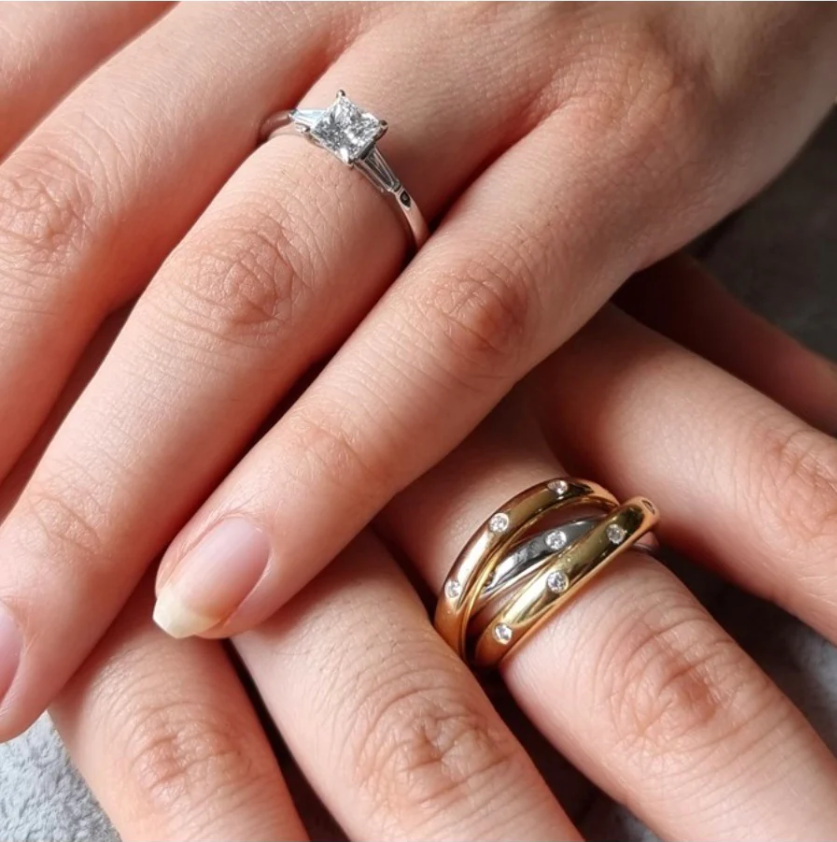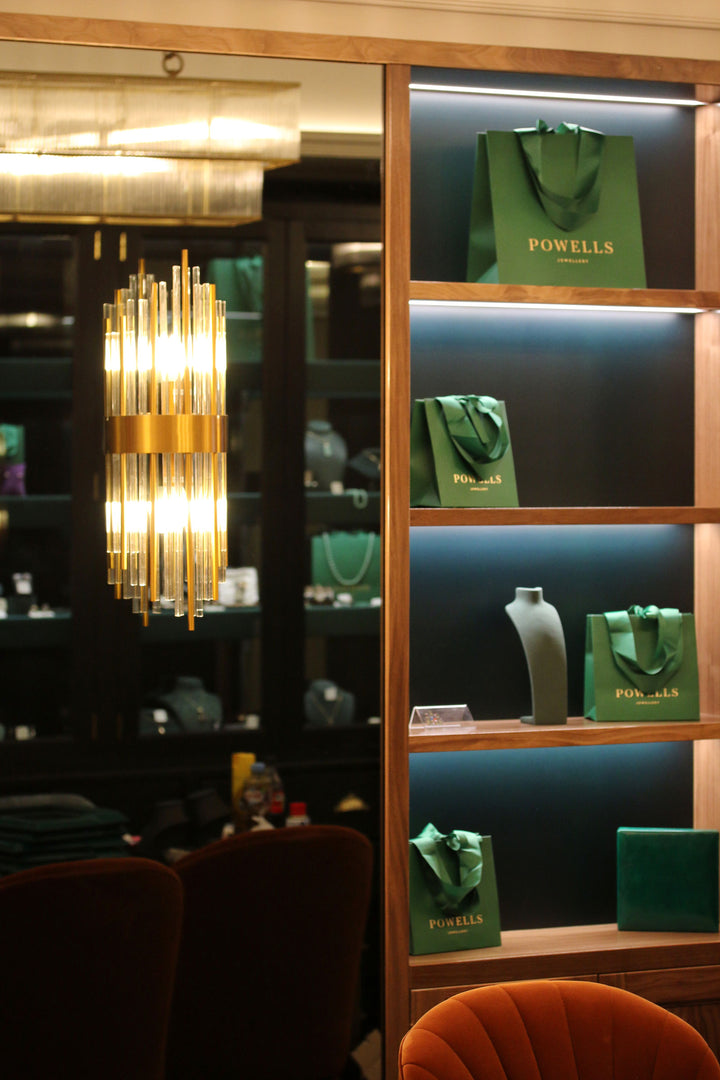The Different Types of Metals Used In Jewellery
Consider the following scenario: you are in a jewellery store looking for new jewellery. You know what you want in terms of style, diamonds, and gems, but you are unsure which metal is right for you or your jewellery. Although jewellery can be made from a variety of materials as fashion trends change, the metals most commonly used are silver, platinum, and gold. Powells Fine Jewellery believes it is critical to understand what you are purchasing. Therefore, in this blog we will share everything you need to know about each metal so you can make an informed decision.
Silver
Silver has been used since 3000 BC and has been associated with luxury and wealth for centuries. Silver, like gold, comes in a variety of forms, the most common of which are sterling silver, pure silver, and silver plate. It is thanks to American Jewellery brand Tiffany & Co who pioneered the use of silver in their jewellery, leading to it being a popular metal choice within the industry.
Sterling Silver – is an alloy composed of 92.5% of silver and 7.5% of other metals like copper or nickel. By incorporating these metals, it increases the strength and durability. This type of metal is perfect for jewellery as it will not rust or perish. If looked after, sterling silver jewellery will still look just as good, well into the future.
Fine Silver – is the closest to pure silver and can be identified by the hallmark. Fine silver is made up of 99.9% silver and .1% of slight trace elements that are not significant quantity. If you want fine silver jewellery, we recommend that you purchase this metal as earrings or pendants rather than items that will be subjected to a lot of wear. This is due to the softness of pure silver making it unsuitable for everyday jewellery.
Silver Plated – is a very thin layer of silver that is coated on top of a base metal - typically copper. Due to the small amount of silver that silver plating contains, over time it begins to discolour and fade away. So, as you can imagine, this method is unlikely to be found on fine jewellery but rather on costume jewellery and inexpensive fashion jewellery.
Platinum
Did you know platinum was once used to design decorative items between 1200 and 700 BC in Ancient Egypt? Nowadays this precious metal is widely used in jewellery and is a popular choice for many, especially for engagement and wedding rings. It is the following qualities of platinum that makes it the most desired metal of choice in jewellery today:
Purity – Seeing as platinum used in fine jewellery is 95% pure, it is prized for its natural strength and high desirability with its white metallic hue.
Durability – Platinum is higher in density, therefore, is heavier in weight and hardness making it much more durable compared to other metals. Perfect for your precious jewellery.
Patina – As other metal’s finish and textures change with time and regular use; platinum develops quite beautifully. As a result, platinum is very low maintenance and easy to clean with a soft cloth.
Hypoallergenic – Due to the purity of the metal, there is little need to worry about allergic reactions and is a great option for those with sensitive skin.
Enhances Diamonds – Platinum amplifies the beauty of diamonds in jewellery as the natual white shine compliments the radiance and colourless sparkle of a diamond and does not cast any colour on the gem.
Gold
For many ancient cultures around the world, gold was used in many jewellery pieces and structures to portray the status of wealth. Today, gold is just as popular in jewellery as it was back then, it was even the preferred choice for adornments for Egyptian Pharaoh Tutankhamun back in 1323 B.C. Gold is an excellent choice for jewellery with intricate details and is resistant to rust, tarnish and corrosion.
Colour
Gold seen in jewellery tends to have a mixture of alloys such as silver, copper and traces of zinc to give it strength and durability as pure gold is too soft for everyday jewellery. Gold in its purest form has a slightly reddish yellow colour, however, the mixture of alloys can also be used to produce coloured gold in several other shades such as white and rose gold.
White gold – This silvery white shade is achieved by mixing pure gold with at least one white metal such as silver, or palladium. White gold tends to require one extra step that gives is the ultimate brilliant white lustre that we adore; this is known as rhodium plating.
Rose gold – By mixing gold, copper, and silver together results in a pinkish hue known as rose gold. This shade is the most durable compared to the other gold colours due to the copper alloy.
Carat
If you’ve heard the term carat in jewellery but unsure what it means, carat gold measures the fineness of gold in an item. According to Britannica, a gold carat is 1/24 part, or 4.1667% of the whole, and purity of a gold alloy is expressed as the number of these parts of gold it contains. You can find the amount by identifying the hallmark.
9ct (37.5% purity) –Although it contains the least amount of gold, 9ct is tough and quite affordable, making it a popular choice for those on a budget. In hallmarking, 9ct gold is typically displayed as 375 and 18ct would be displayed at 750.
14ct (58.5% purity) – This amount of gold is a happy medium between durability and beauty as it is less likely to tarnish than 9ct. It is also significantly more resistant to scratches compared to higher carat gold. You would likely come across 14ct gold in USA whereas 9ct & 18ct tends to be the UK standards.
18ct (75% purity) - the purest and most expensive in modern jewellery. 18ct is usually reserved for high-end pieces such as diamond engagement rings. It provides the perfect balance between luxury and durability.
22ct & 24ct - 22ct carat was often used in the Victorian era which means you can still find it in antique jewellery today. 24ct gold, however is still widely used in places like the Middle East and India. It is prized for its gorgeous golden hues although due to the softness of pure gold, it is often not set with gemstones.
Now that you know the difference between each of the common metals found in jewellery, you’re fully equipped to make the best decision for your next purchase. If have any further questions, you can click here to book an appointment to speak with one of our team of experts either in-store or virtually.
Resources:
Jewellery Shopping Guide , Angara , Melora , Britannica , Silverstone Jewellery


